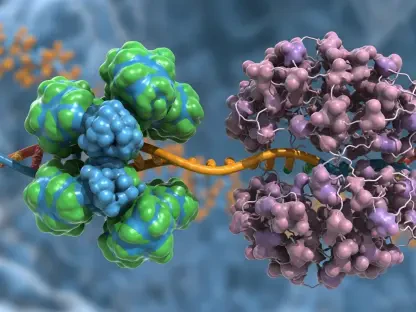In the age of rapidly advancing technology, the integration of artificial intelligence (AI) with human decision-making is a field garnering extensive research interest. As AI systems become increasingly capable, a key question arises: Can AI and humans work symbiotically, leveraging each other’s strengths to make superior decisions? The potential of AI to complement human judgment, rather than replace it, is being closely scrutinized. Researchers have pointed out that while AI excels in prediction, real-world applications often experience shortcomings, especially in high-stakes scenarios. For instance, the indiscriminate use of AI in credit scoring or content moderation can lead to misinterpretations and errors, revealing a gap between potential and practical application.
Context and Relevance
Research on the complementarity between AI and human decision-makers highlights its importance across various societal domains. Central to this inquiry is how AI can enhance human decision-making processes, especially in complex environments where human intuition and expertise are crucial. The research underscores the societal and economic significance of this synergy, particularly in areas like public policy, resource allocation, and business strategy. While AI’s standalone capabilities often dominate the conversation, the real potential lies in fostering effective human-AI collaboration. Developing algorithms that consider human interaction can lead to not only fair but also innovative solutions that tackle pressing challenges with efficiency.
Methodology, Findings, and Implications
Methodology
To explore the interaction between human decision-makers and AI, researchers employed a novel approach known as complementarity. This approach focuses on designing algorithms that support human decision-makers by providing selective and targeted assistance. In the study, simulated hiring experiments were conducted, where participants were required to make decisions with varying degrees of algorithmic support. This experimentation was geared toward understanding the dynamics of human-AI interaction and evaluating the effectiveness of collaborative algorithms.
Findings
The research uncovered noteworthy insights into how humans interact with algorithms and the resulting effects on decision performance. A major finding was that indiscriminate reliance on algorithms often leads users to overlook important contextual information, while completely ignoring algorithmic input can result in missed opportunities. The study demonstrated that complementarity-based algorithms outperformed predictive algorithms working in isolation. Through collaborative decision-making, participants achieved higher decision accuracy, exemplifying the value of integrative AI models that account for human intuition alongside AI recommendations.
Implications
The implications of these findings are broad and impactful. In practical terms, designing AI systems that integrate human expertise can transform decision-making processes in multiple sectors, enhancing accuracy and fairness. The research advocates for shifting the focus from AI supremacy to fostering harmony between human and machine intelligence, creating systems that are transparent and context-aware. This approach could notably benefit under-resourced sectors, optimizing resource distribution and improving outcomes in areas like education, healthcare, and social services.
Reflection and Future Directions
Reflection
Reflecting on the research highlights the challenges encountered in harmonizing AI and human judgment. The process of crafting algorithms that genuinely complement human decision-making is rife with complexities, from algorithm bias to understanding human cognitive limitations. Despite these challenges, the study managed to demonstrate the advantages of human-AI synergy through methodical experimentation.
Future Directions
Future research is needed to further explore the depths of human-AI collaboration, with an emphasis on addressing unanswered questions around ethical considerations, biases, and transparency in algorithm design. Expanding the study to more diverse contexts could offer insights into refining algorithms that adapt to varying decision-making landscapes. Such efforts could ultimately lead to more sophisticated AI systems that not only assist but enhance human capability across sectors.
Conclusion
The study into AI and human decision-making underscores the promising potential of a collaborative approach. By designing algorithms meant to work in tandem with human judgment, the research has illuminated a path toward improved decision-making accuracy and fairness. The future of AI lies not in seeking to replace human judgment but in augmenting it, paving the way for innovative solutions to complex societal challenges. Future efforts should focus on harnessing this complementary framework to create systems that are not only technologically advanced but also deeply empathetic and contextually aware, fostering a stronger, more effective partnership between AI and humanity.









